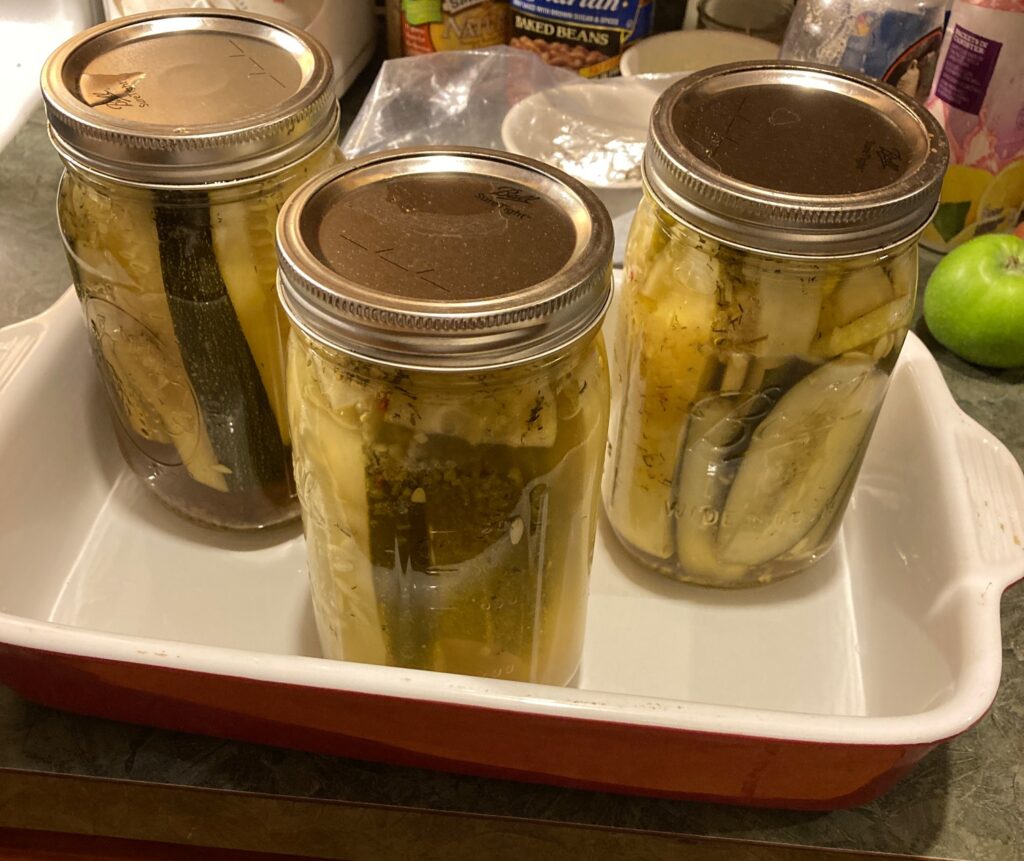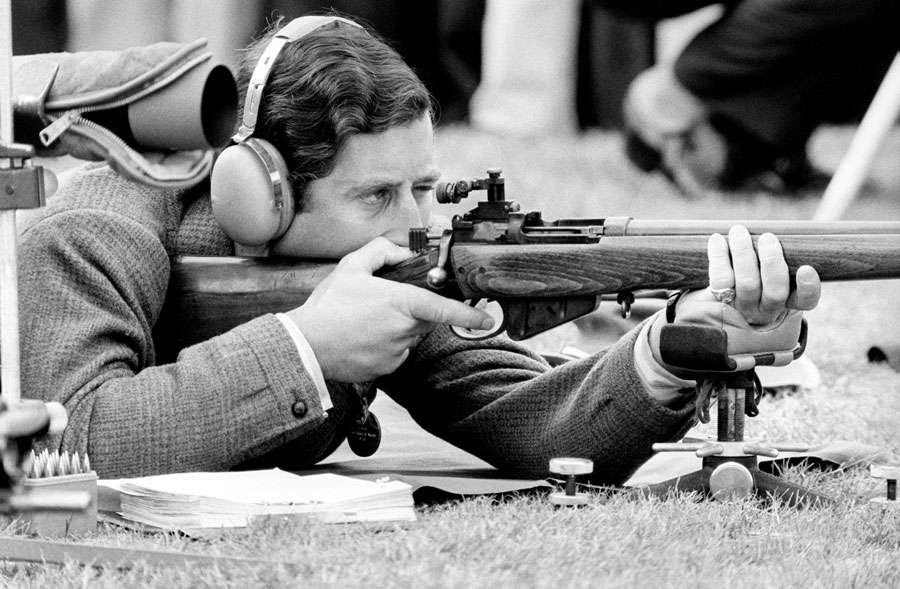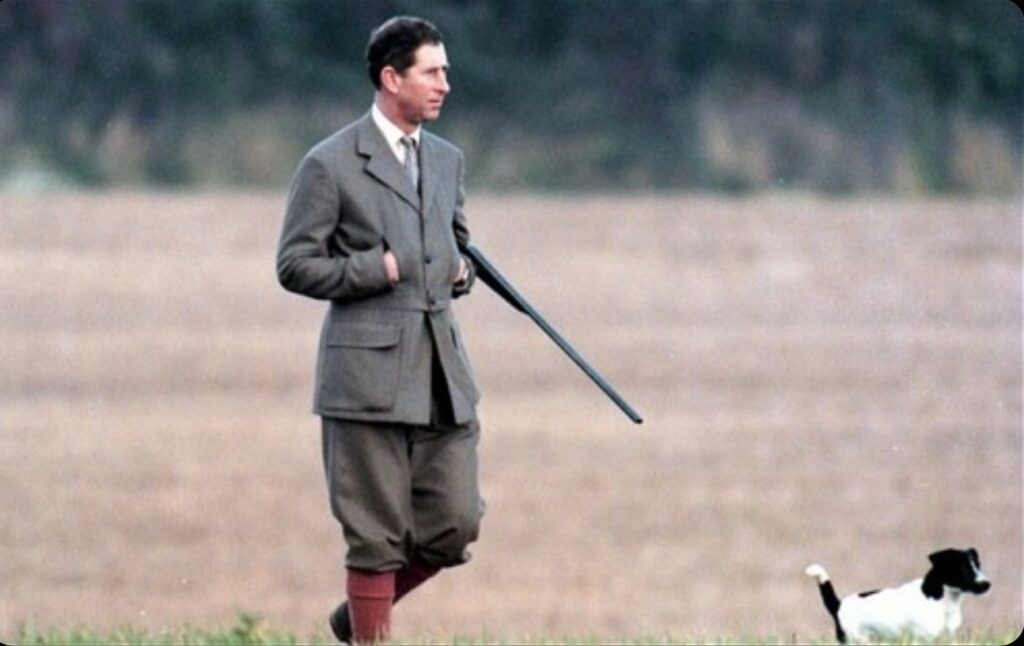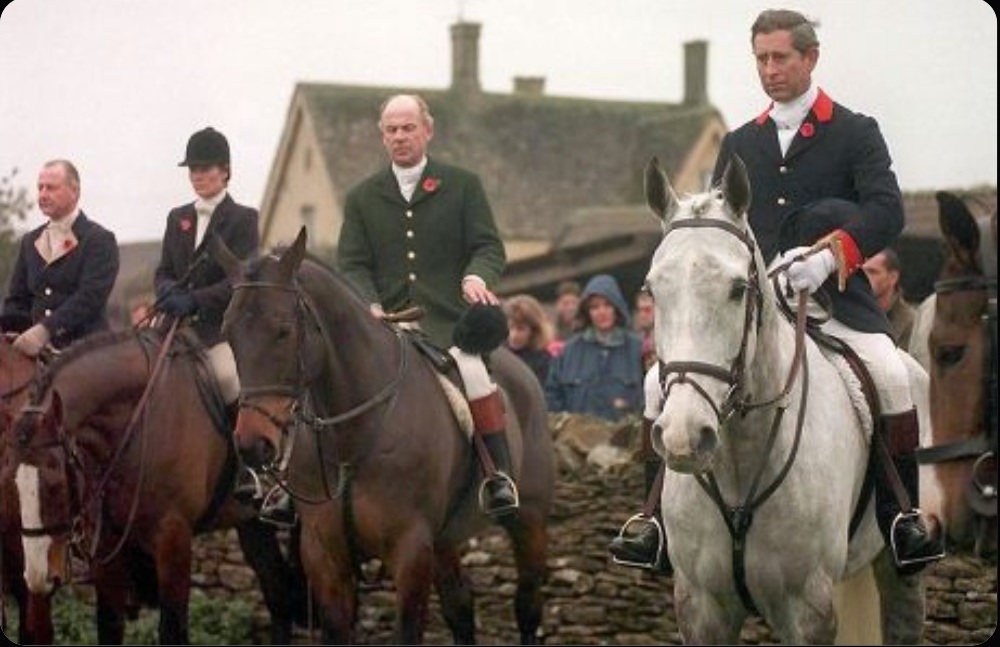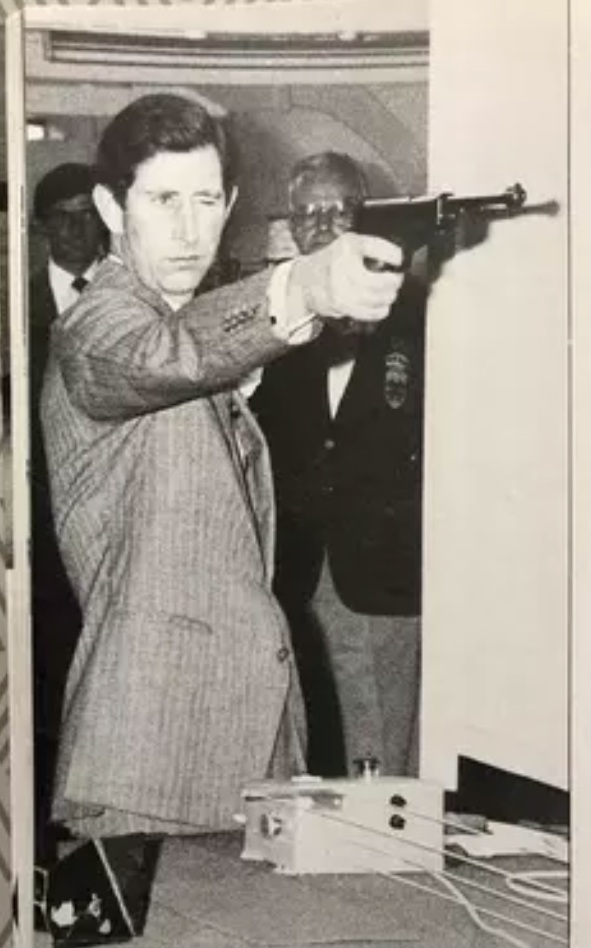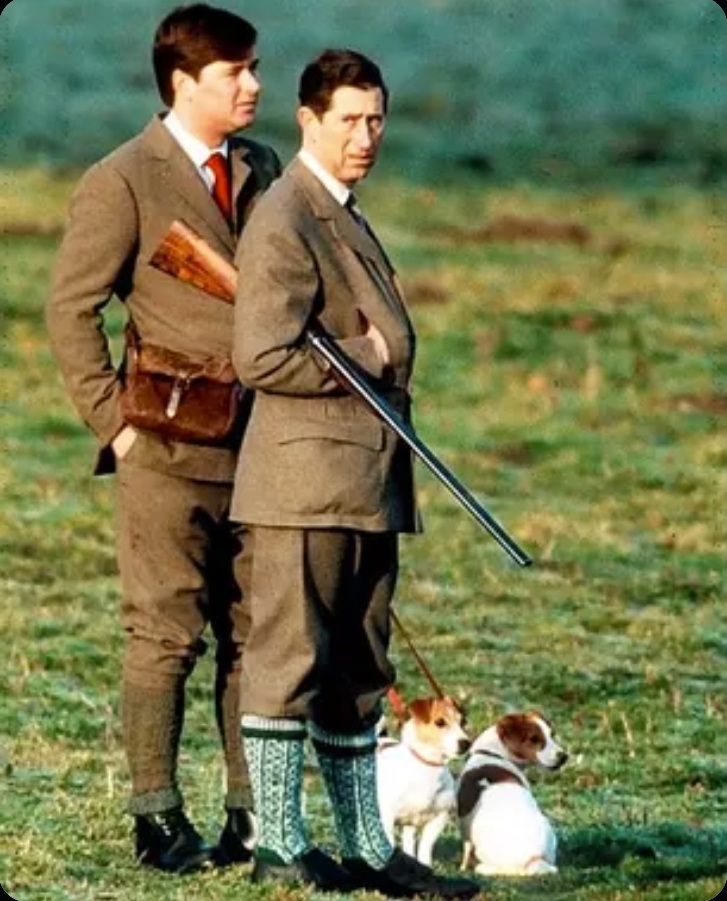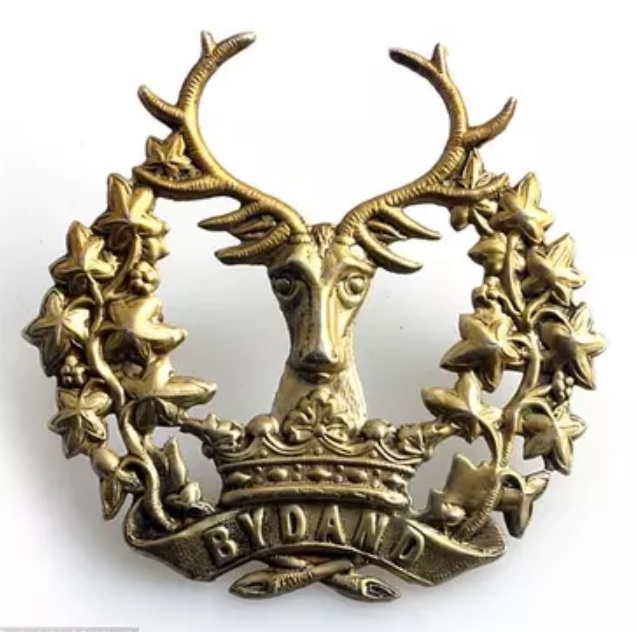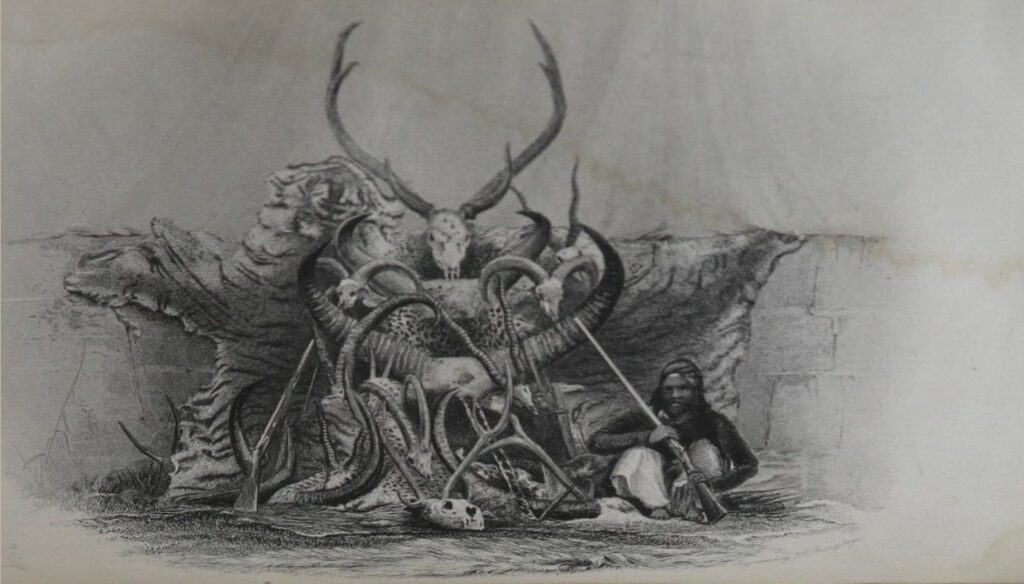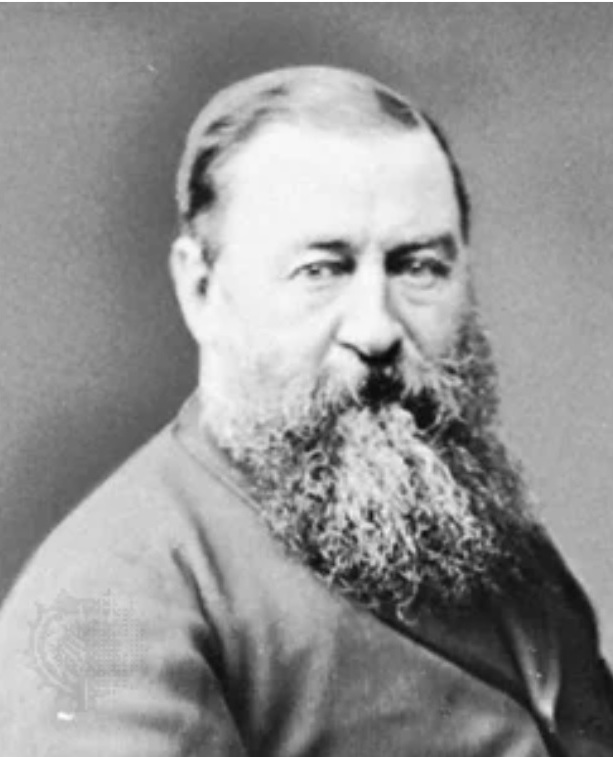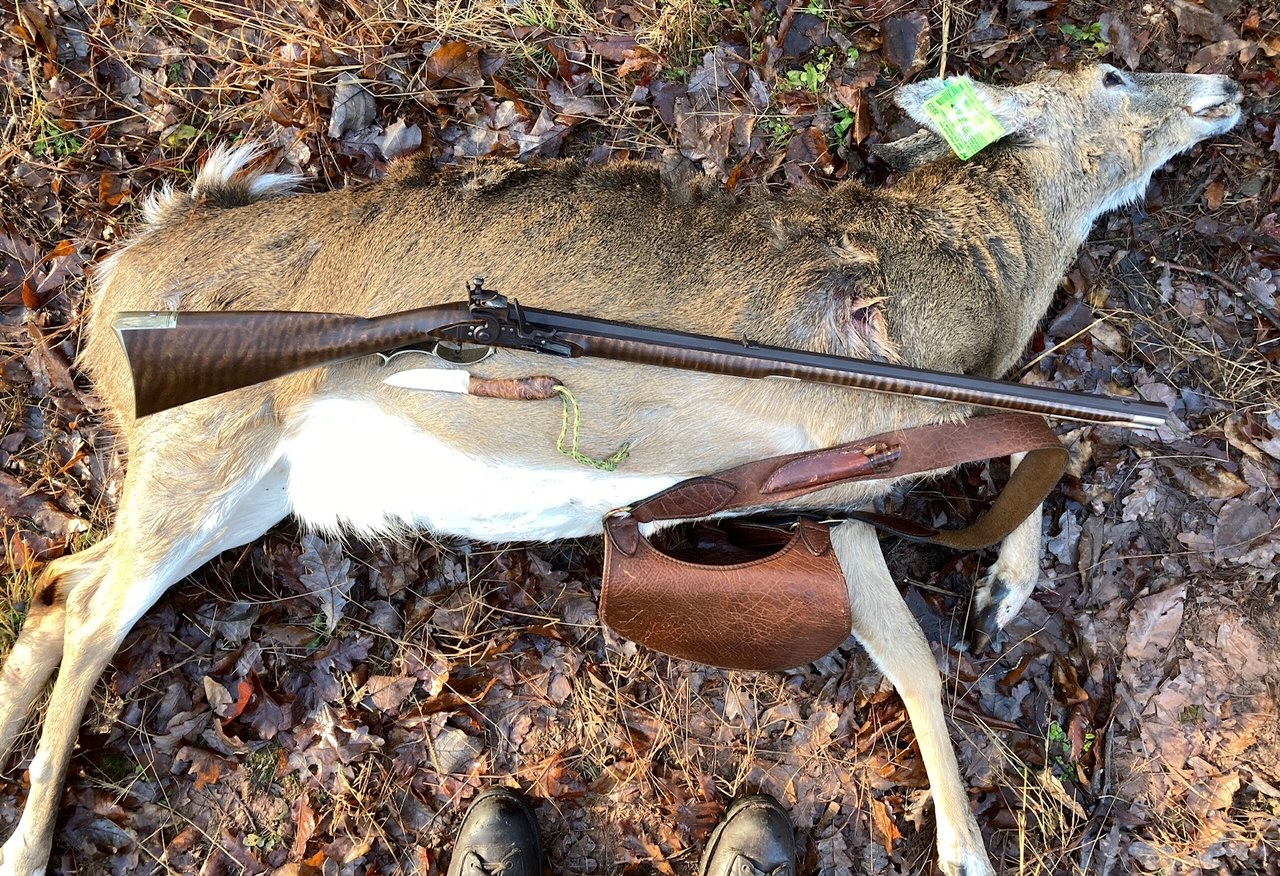Posts Tagged → hunt
Why we share wild food with each other
People around the planet enjoy sharing wild food with one another, and we always have since God above evolved our species, however it is He evolved it. It is an innately human trait to both enjoy giving and receiving wild food.
Wild food is a broad category, but it excludes anything we buy, especially in a big store. Foods from stores are almost always, or are always, plants and animals raised in intensive industrial environments, replete with chemicals everywhere and in everything. Wild food usually includes fruits, herbs, and vegetables grown in our own gardens; fruits we have picked in the wild, like berries and apples; and any wild game meat or fish we have harvested. Chemicals are either non-existent or are naturally occurring in minute amounts from the native soil.
All around the planet people put a high premium on wild harvested meat. In Africa and Australia, “bush meat” is highly valued as fresh, nutritious, free of human-injected chemicals and hormones. Everywhere bush meat is eaten, it is traded in lieu of money. And when a European bites down on a size 8 piece of shot in her forkful of grouse recently from the Scottish Highlands, where it was shot on a drive, hung for three days in a cooler, and then shipped off to Spain, Germany, England, or France, she knows she is eating something special, and it tastes even better. The same is said for the meat of hunted red deer, and occasionally wild boar, both of which are highly prized foods served in restaurants and home kitchens across Europe.
Wild food is better for us, we all know that, both in terms of what is in it and also what is not in it, because (except for poached bush meat from at-risk wild animal populations in Africa) it is environmentally sustainable. It also tastes better, because it has grown up under natural circumstances. Giving and receiving it as a gift is a symbol of real friendship and caring. Wild food is something most Americans can participate in, especially as growers and givers, and so I hope that someone reading this is inspired to take a corner of their luxury status symbol yard and turn it into an unruly food garden. The pleasure of sharing the harvest with friends and neighbors is quite enjoyable.
Humans began as hunters and gatherers and we remain such, even with our thin veneer of civilization inartfully separating us from the wild world around us. Much of our innate gender differences are centered on what hunting and gathering was done by our ancestors over the past few hundred thousand years. Gathering food by hand is a natural and innately human thing to do, and most people find gardening calming and enjoyable. I guess being a real human and not a false, contrived human can be pleasurable.
Last month I picked over six pounds of blueberries and another five pounds of blackberries and red and black raspberries, about a hundred pounds of peaches, and about fifty pounds of apples. I won’t share these hard-won prizes with you by the fistful, because then the berries would all disappear within a few minutes. Rather, I will share them by mixing them into muffins, pancakes, cobblers, pies, and preserves spread onto toast, ice cream, and cakes. This way these gems last all year long, and everyone gets to share in them.
Aside from being cleaner and tastier than industrial foodstuffs wrapped in plastic and styrofoam, wild food has the benefits of bringing us closer to nature, closer to reality, closer to self-reliance and self-sustainability, and closer to people we might not normally encounter. Nature can be the sharp berry bushes we must reach through to pluck our juicy berries, and it can also be the mother bear and her cubs waiting for you and me to clear out of the scratchy berry patch so they, too, can feed on Nature’s bounty.
Nature here can also include a variety of destructive garden pests like squirrels, rabbits, groundhogs, and chipmunks, and learning to cope honestly with these artificially overabundant animals teaches us important lessons about reality versus luxurious and silly childish feelings and notions of animal welfare that are terribly destructive.
For example, artificially high populations of pest species, like squirrels and ground hogs, spread high amounts of disease and physical destruction. And when vegans strut and brag about their reliance on industrial monocultures like soy beans, they ignore the tremendous environmental and habitat destruction wrought in their vegan names. There are significant environmental costs to veganism and vegetarianism that could be offset if those adherents participated in wild food, like growing their own and trading/ bartering for what they cannot grow themselves. Few things are more annoying than listening to someone from a wealthy lifestyle bragging up their veganism/ vegetarianism while simultaneously tearing open plastic wraps and environmentally damaging containers containing industrial foods. Food isn’t just about what you put in your mouth, it is very much about where it comes from, where it was grown and where it lived before your credit card brought it home.
Hunting in America and Canada produces millions of pounds of fresh, clean, natural, wholesome wild meat for more than just the people who pull the trigger. Hunters Sharing the Harvest is a well known program that enjoys widespread support from both givers and receivers. Schools, neighborhood soup kitchens and homeless shelters, and just simple low-income people, all benefit from receiving this wild meat. And farmers and forest owners benefit from having artificially overabundant deer and hog populations thinned out so their crops can grow in peace.
For those silly people who oppose hunting, jiminy crickets, people, wake the heck up. You are not living in a fairy tale book, and you are having your own huge impacts on the planet around you. An animal’s life is not just measured by how it died, but also how it lived. Almost all industrial meat comes from factory farms, enough said. However, wild meat comes from animals living their lives to their fullest before quickly falling over dead from a bullet or an arrow. Any modern educated human who believes that wild animals die naturally under antiseptic and peaceful conditions is a fool, enough said. Recreational and population management hunting (not poaching or market hunting) is a perfect way to provide environmental protection to wildlife habitat, conserve vulnerable wildlife populations, and harvest natural, sustainable wild food.
By mid-December of this year, I will have probably shared over a hundred pounds of wild meat, mostly venison, occasionally waterfowl, turkey, and small game. The people who receive my gifts of deer meat (that I have shot) are always grateful, and they often report back to me on what they made with the gift, who they shared it with, and how delicious it tasted. This exchange is true friendship, and in a politically fractured world, we all can use a little more friendliness, a few more friends. Wild food is my way of contributing.
In an hour I am dropping off a bag of peaches from my own trees, and picking up a bag of pears from my friend Ryan’s trees.
What wild food are you going to grow or harvest, eat, and share? If you have a big lawn, put away that lawn mower and start growing your own food. You will like it, I promise.
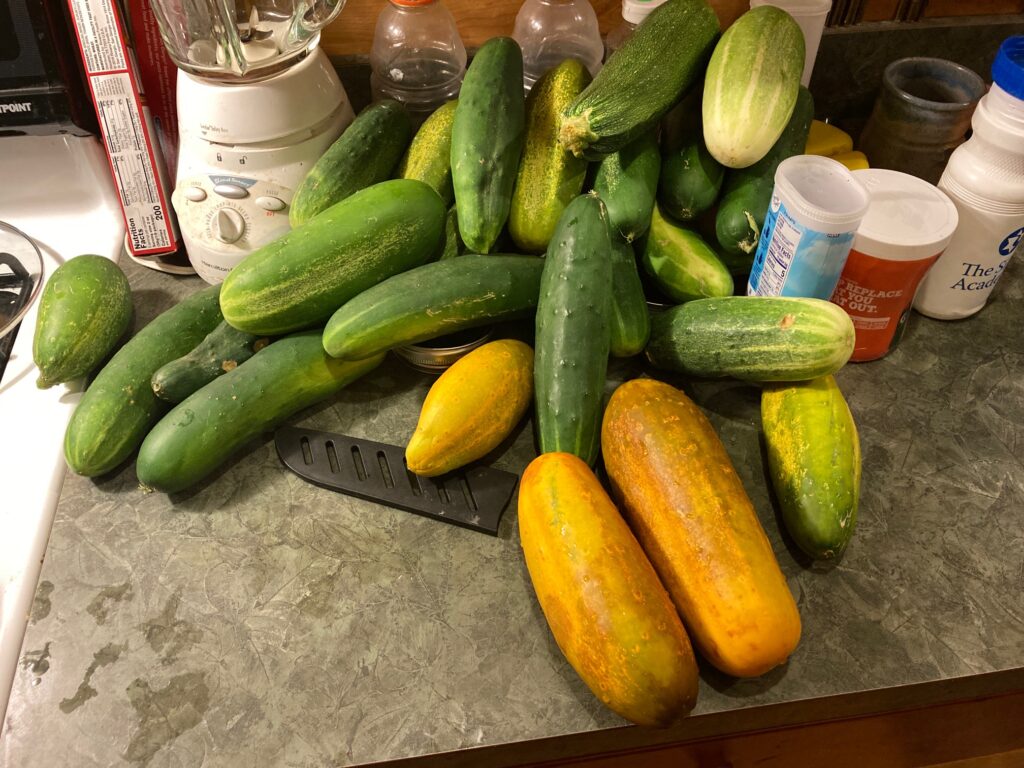
cucumbers from our garden don’t cost a dollar apiece like in the stores, and they are fresher and have no chemicals. Our home made pickles are far tastier than store bought, and have no chemicals. We use the overripe ones to make bread and butter pickles.
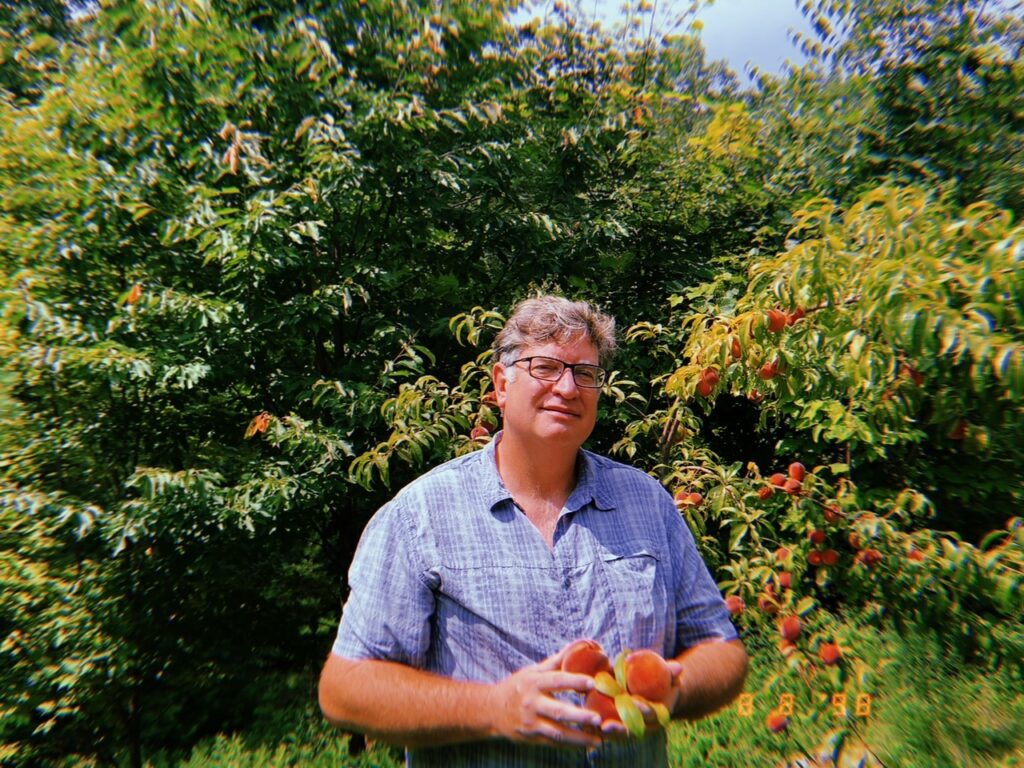
We have a bunch of peach trees. If the bears and the squirrels don’t raid them, we get to enjoy them, and cook with them, all year long
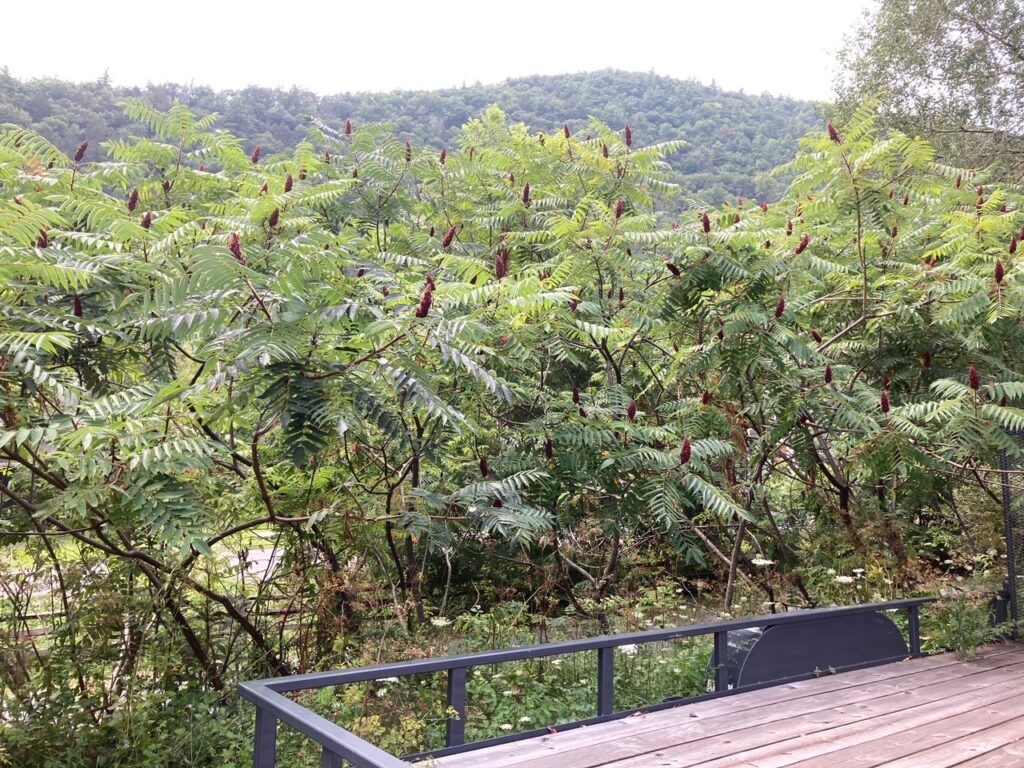
Sumac grows wild everywhere. Steeping a few heads in a bowl of warm water provides the most delicious drink possible. Chill it, serve it with sugar over ice, sumac tea is free, easy to forage, and chemical free
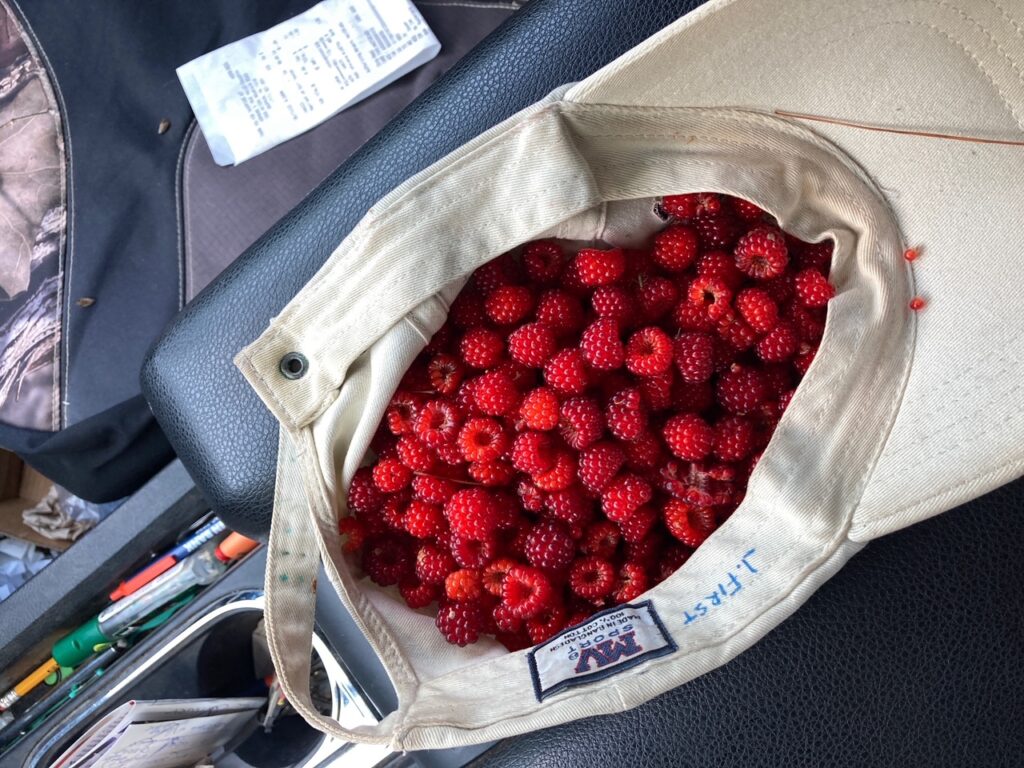
A hatful of red raspberries I foraged in July in the shrubbery of a public parking lot. IN a store you would pay twenty dollars for these wild ones, and they would be half as good. Go forage and pick your own food
PGC’s strange hunter survey
Today a Pennsylvania Game Commission email arrived, asking if I would participate in a brief hunter survey. Being 100% opinionated about everything, naturally I acquiesced. “Shy” was maybe used to describe me when I was young, but not as an adult. Because I consider myself a careful thinker, committed only to First Principles from America’s founding and to The Bible, and being relatively uncommitted to mass movements or parties, I enjoy sharing my perspectives with people who are open minded and interested in understanding different points of view than the prevailing narratives hawked by the Mainstream Media Corporate Industrial Complex.
The PGC survey consisted of really just three questions, all of which were about hunting waterfowl such as ducks and geese.
First question was did I hunt ducks last season, to which I responded No, I Did Not Hunt Ducks Last Season. The reason being that although I live just two blocks from that once famous migration route on the mighty Susquehanna River, the current duck migration down the Susquehanna River is not even a shadow of its former self. Rather, the duck migration here does not exist and has not existed for twenty years. I see more ducks lounging about and crapping on people’s yards in Italian Lake City Park across the street from my front yard than I see out on the Susquehanna River sitting on a bucket with a shotgun in my hand.
So, unless I travel to the Chesapeake Bay to hunt ducks, it is rare for me to get out after them any longer. Without Sunday hunting like all the surrounding states have, my opportunities for waterfowl hunting in Pennsylvania are pretty limited to what I can access quickly and easily. Like the dead Susquehanna River within sight of my dining room window.
Second question asked which Goose Zone I hunted in. Easy enough to answer.
Third question, which was broken down into three different alternatives, pertained to which of three unbearable and useless goose hunting seasons I liked or did not like, and how much I liked them or disliked them. All three alternative seasons PGC presented were unnecessarily fragmented from late October into February, and included very little early season but lots of late and really super late season. The problem being that the southward goose migration is heaviest in the part of October when the PGC shuts down our goose hunting, and the goose migration is entirely over by the time the PGC season opens back up. Fat lot of help these potential seasons offer!
This is a curious situation, which I have never had satisfactorily answered. Some hunters I know say that the Susquehanna River Waterfowlers, to which the PGC looks for hunter guidance, is made up of anti-Sunday hunting fuddy duddys who would rather give up hunting entirely than see Pennsylvania hunters get our share of the goose migration and also have Sunday waterfowling. True or not, this is what I am told.
Other hunters I know say that the PGC is hopelessly tangled up with the US Fish & Wildlife Service on all kinds of policies, not the least of which is that PA has a boatload of passionate hunters who, given the least opportunity, will, it is said by wildlife management officialdom, destroy, decimate, eliminate, and exterminate every duck, goose, gander, coot, loon, pimpernel, plover, and shoveler that flies, walks, waddles, crawls, or ducks through the migration route between New York and Maryland. And so, according to this view, Pennsylvania waterfowl hunters must be artificially hamstrung and kept from going afield when the birds are flying the most. Again, I do not know how much truth there is to this, though I will testify to the fact that Pennsylvania does in fact field a lot of hunters. A lot.
And so we get to my response to the three ridiculous seasons proposed in the PGC survey: Not one of them makes any sense; all three are equally nonsensical alternatives.
What is the point of giving me various dates to hunt if the animal we are hunting is no longer in the venue in those dates, but has long since flown the coop and is doing leisurely backstrokes in Florida and Louisiana?
It appears that the PGC knows its three silly seasons are indeed silly, and yet the agency is overtly committed to them.
“You can have a crap sandwich, a sh*t sandwich, or an imaginary sandwich,” is what PA waterfowl hunters are presented here.
This means Pennsylvania waterfowl hunters outside the Philly area southeast corner and outside a couple of interesting little “habitat and flyway bubbles” around Lake Erie and Shenango Lake in Western PA are officially SOL and just wasting their time sitting with a shotgun on a bucket and freezing solid past late December.
This current no-win situation begs for a bigger than life solution, but it also reminds me of the old Sunday hunting situation, where the PA Farm Bureau stole our private property rights for decades by artificially preventing any Sunday hunting. Only by marginally nibbling around the political edges did PA hunters finally get three weenie Sundays to hunt big game, and one suspects that such a small and unsatisfying “solution” is what is in store for PA waterfowlers, if a solution is to be had at all.
Maybe PGC will add more waterfowling days afield in March, when every single last duck and goose north of the Mason Dixon Line has landed in Costa Rica for the winter. Thanks but no thanks, PGC.
I for one, though I undoubtedly represent many others, would like to hunt ducks and geese in Pennsylvania at or closely around the same times/dates/days that hunters in New York are hunting them. But that would make sense, and if there is one thing I have learned as a PA waterfowl hunter, our seasons here are not intended to make sense.
The king you got, not the king you wanted or needed?
Two days ago was Coronation Day in England, whereupon the former very very longtime Charles Prince of Wales became Charles King of England AKA King Charles III. Even in The Year of Our Blessed Freedom From Monarchy 2023, this is still a big deal, because like it or not, kings and queens can matter when they want to, for better or worse.
This new king follows on the heels of his most amazing and impactful mother Queen Elizabeth, whose traditional values and top notch leadership skills many people miss. It appears Charles also wants to matter, like his mother, to be of consequence, to make what he believes is a positive difference on Planet Earth. So, we take note of his ascendence. He may not be the high caliber of his mother, who many would have liked to have seen replaced by another woman or man of equal qualities (good luck finding such a person anywhere in Western Civilization today), but Charles is nonetheless now the monarch. For better or for worse, or most likely a mix of both really bad and some good, King Charles is not going to be invisible.
Setting aside the die-hard monarchists for a moment, there was still a lot of worldwide public interest in Saturday’s coronation, if only because several mini-dramas played out in the coronation process. One being the role of His Most Spoiled Brattiness Prince Harry (strategically blocked from camera view at the actual coronation by a tremendous red feather plume in his aunt Anne’s hat in front of him), two being the marked absence from the coronation of Harry’s horrendous harridan of a wife, MeGain Markle, three being the final and hard public point being put on Charles’ longtime relationship with Priscilla, which had been openly maintained even while Charles was married to the most glamorous human being ever to grace the earth, Princess Diana Spencer. Many people never forgave Charles for his affair and disrespecting of Diana, but now, it’s officially all over. Charles and Priscilla are officially married and officially King and Queen of England.
Surely there are other notable features of this coronation, but to me, the one that matters most is the one that almost no one (that I could find) took notice of, and that is King Charles’ masculinity and his love of field sports, notably hunting. With guns, and occasionally spears. In a world of the establishment war against boys, against masculinity and manhood, of forced and artificial feminization of men at every turn (like Bud Lite’s Dylan Mulvaney debacle in the USA), King Charles’ quiet but absolute manliness is a crucial symbol for normal people and for those who should want to return to being a natural, normal, healthy human.
If nothing else, King Charles may end up being a potent symbol of How To Be A Man. Laugh if you want about this, but at one time not too long ago, 99% of boys naturally wanted to become masculine men when they reached adulthood, to be service-minded police officers, brave firefighters, adventurous cowboys, heroic soldiers, and hunting was a bedrock experience that trained many boys for these fields. In a western world now under siege from within our borders and from within our own governments that are captured by our worst enemies, who among other things are doing double duty to weaken us by erasing manhood and masculinity from our population, having public symbols of masculinity and manhood, like King Charles, is more important than many people realize.
Setting aside his many bad policy positions, King Charles is no dithering dandy, no fop. Quite the opposite. He speaks firmly, rides tall in the saddle, properly and expertly handles rifle, pistol, and shotgun, and is not afraid to kill his own dinner or get blood or dirt on his hands or clothes. This is a king I could like and who we all need, if only because he is a real man. Long live this manly king.
That curious Rural-Urban divide thing
That curious Rural-Urban divide thing is really bugging me, and I want to share some personal experiences and observations about it with you.
If we could just please get away for one minute from the Justice Sonia Sotomayor bribery scandal, please. Yes, far-left Justice Sonia Sotomayor took over THREE MILLION DOLLARS IN BRIBES from Penguin Random House to protect Penguin Random House when their critical lawsuit arrived before the US Supreme Court, and no, Sotomayor did not step aside and recuse herself or anything high-minded like that. She just blatantly ruled in favor of her three million dollar friends at Penguin Random House books, like nothing was the matter. Even though this is very much The Matter because bribes are a big no-no.
With all of the talk these days about ethics on that Most High and Illustrious Court, we would think that Justice Sotomayor’s blatant and impeachable criminality would be the main public subject of ridicule and hate these days. But we would be wrong, because evidently America’s urban people are really hating the rural people right now, instead, and they would rather discuss Naughty Rural People than that crooked, lying, cheating, impeachable Justice Sonia Sotomayor.
OK. So be it.
Seems like the general happiness, low crime, and high quality of life among rural residents is drawing the vengeful eye of the jaded urbanite. Rural people hunt, own lots of guns, commit almost no crimes with said guns, and yet are being told by the angry urbanites that they must nonetheless give them all up, and get in line for their creepy crawly bug breakfast.
Also bothering the Most High, Superior, Better Edumacated and Definitely Unhappy urbanites are things like “rural people smell bad”, “rural people drive large pickup trucks that expel a lot of carbon”, “rural people cut down trees and own chainsaws”, and a real big complaint is that rural people drive tractors and spread animal manure on fields. Pee-yew it stinks and is dirty! Stop it!
I know that in a rural bar a person could sit down over a cold Coors Lite or a delicious Yuengling Lager and have a reasonable, quiet conversation with a clueless-but-judgmental urbanite about how the rural people grow all the food and fiber and pretty wood that the urban people eat and use, and that rural people fill their stomachs with clean and cleanly killed wild game instead of mass-murdered industrial factory beef and chicken, and that rural guns hardly hurt anyone. But such a conversation is about as likely to happen as Justice Sotomayor is likely to resign her corrupt big ass from the US Supreme Court.
Liberal urban elites are similarly mysterious to rural hunters and their neighbors. For example, most American urban areas are crime ridden hellscapes with high taxes, high cost of living, low quality of life, poor public services, and yet…all the “educated” “knowledge jobs” are located in these sh*tholes. Supposedly these catastrophic urban areas are elite and nonetheless superior to rural places. They just are.
The real question I see is whether or not an urban person can overcome their prejudices, rise above their own fragile ego, and move to a healthy mental place (please do not move to my physical place, unless you become a NRA Life Member) that works for them and for rural people. The live-and-let-live nature of rural life tells us that rural people don’t sit in judgment of others, they are simply happy when left to themselves. It’s a pretty cool way to live, and mystified urban people could learn a thing or three from them.
Step one in your urban person learning process? Leave us the hell alone. Mind your own damned business, quit criticizing us, and stop telling us how to live while your own communities and people are in massive disarray and melt-down.
Step two, if you move to our rural communities because they are pretty, undeveloped, safe, and friendly, do not continue to vote and behave the way you did in the urban sh*thole place you just ran away from. Your former urban jackass lifestyle ruined your former hometown, and we don’t want any of it polluting our little slice of heaven out here in the sticks. So, if you move to a rural place, register as an Independent voter, buy some guns, learn to hunt, become self-reliant and less judgmental, and learn to hear what other people think. You might come around to thinking a US Supreme Court justice taking bribes is a bad thing.
Turkeys and the critters who eat them
Wild turkeys are one of Pennsylvania’s great conservation success stories. When I was a kid, wild turkeys were like a fable, a mythical animal inhabiting far distant wild lands, that could be seen and maybe heard if you were one of the lucky few. They had been decimated by market hunting in the 1800s and early 1900s. When I took my hunter safety education course at the age of ten at the old Army Reserve building out in the farmland on the east side of State College, the Pennsylvania Game Commission staff proudly showed us films of their successful trap-and-transfer program, where wild turkeys were lured with bait into the range of nets, caught, and then driven to the far reaches of Pennsylvania’s rural areas. Usually State Game Lands with fields.
From the 1970s until the early 2000s, Pennsylvania’s wild turkey population grew and grew, until they seemed to be everywhere, including well south of I-81, the old imaginary dividing line between concrete civilization and wild man country. Apparently turkeys are adaptable to concrete wilderness, because they took up urban residence all over the east coast. Not content with being colorful freeloaders along with the ubiquitous and nasty pigeons and rats in these urban areas from Massachusetts to New Jersey, wild turkeys also provide much hilarity as they attack everything that moves in a display of misguided dominance, including mailmen, soccer moms and their kids, and dogs being walked. Look up the “incident reports” of wild turkey muggings of disbelieving urbanites; lots of funny videos to go along with them, too.
So when turkey populations began to decline in Pennsylvania and parts of New York starting ten years ago, people knew it was not due to the birds’ lack of tenacity. Something new and powerful in the old bird + habitat equation was having an effect.
And in fact in many places here in PA, formerly huge turkey populations are now really low or non-existent. I myself used to look out my windows and watch three separate flocks cycle through our clover-planted yards. When I hunted spring turkeys there (northcentral PA), I would start the day surrounded by gobbling toms, and usually had a couple different opportunities to harvest one within the first few days of the hunting season. It was exciting and fun and a great way to begin the work day, although I will say that by the end of May, I was a hollow shell of a human, having run myself ragged either chasing toms myself, or calling for friends who had not yet filled a tag.
Bottom line is, those old flocks of twenty to thirty birds no longer exist. We are fortunate to see one or two wild turkeys at all on our place. And we have excellent habitat with grouse.
What caused the loss of wild turkeys in PA has generated a discussion similar to the one surrounding the demise of the once amazing world famous smallmouth bass fishery in the lower Susquehanna River. It seems that almost everyone involved has a reasonable opinion about it, and the official experts are being second-guessed by people who have witnessed circumstances different than those described by said experts. The ubiquitous use of trail cameras since 2000 has accompanied this growth in sportsman observational opinion, and very often individual hunters will use their cameras’ footage to make very compelling arguments that contradict official wildlife managers’ narratives.
Something similar happens in the aquatic environment, when thousands of fishermen experience and see something different than what they are being told through official government channels.
So now PGC is toying with the idea of releasing martens into the wilds of Pennsylvania. Similar to the fisher that was released back in the 1990s, martens are a furry little weasel-type animal that, like all weasel type animals everywhere, has an insatiable appetite for everything they can catch and kill. Not necessarily kill and eat. All members of the weasel family (wolverines, fishers, martens, mink, otters, weasels) have periods where they become “surplus killers.” That is, they will kill many more animals than they can eat, just because they seem to enjoy the hunt and the kill. Question being now, What will the new marten do to our turkeys?
Will martens do more of what fishers have so clearly done to PA turkey populations, which is to climb up into trees and eat them while they are roosted and asleep? Will martens only eat turkey eggs? Who knows? And so it follows, why release martens into our forests and farms if we don’t know what impacts they will have?
The question I have, and which I know so many other sportsmen have, is: What kind of studies have been done to date that provide confidence that reintroducing marten will have a net-benefit result, and not a net-negative/cost result?
Most of us agree with government biologists that biodiversity in general is important, and we agree that increasing biodiversity is a worthy goal. But, what are the costs and benefits of doing so? What costs and benefits do marten bring to our forests? I can imagine quite a few costs, mostly impacts on ground nesting birds (like wild turkeys, grouse, pheasant, woodcock, and a zillion species of cute little migratory dickie birds) that are already under tremendous pressure from overpopulating (thanks to urban sprawl) raccoons, skunks, possums, feral cats etc., and I wonder if the benefit of a few hundred citizens annually catching a view of one of these cute and elusive furry weasel-like animals is worth the inevitable costs.
One of the things we must struggle with today is that, as much as we would like to return to the pristine conditions of three hundred or four hundred years ago, where humans had a measurable but relatively minor impact on the environment, the reality on the ground today is totally different. The social carrying capacity among different human groups is one consideration. The carrying capacity of other wildlife is another consideration. I imagine that before people go petitioning or pushing to have these newest predators released back into our forests, we should know what their likely impacts are going to be first. I am willing to sign a petition to have PGC thoroughly study this subject, but I would feel irresponsible to ask the agency to jump before knowing what lies ahead and below.
I will say that I like knowing fishers are in our forests, but I do not like the tremendous impacts they have had on squirrels, rabbits, and turkeys. Everywhere a fisher takes up residence, the small game and turkey populations drop dramatically. Personally, I would prefer to know that there were a few hundred fishers living across Pennsylvania, instead of the thousands we now have that are over-impacting a lot of other equally valuable wildlife (and I enjoy recreationally trapping for fisher every year).
I am not saying that adding martens to Pennsylvania will necessarily be pouring fuel on the fire burning up wild turkey populations, but we really should know. That is the responsible thing to do.
If you are going to hunt flintlock, you must practice, practice, practice
Flintlock hunting season ended in southeastern Pennsylvania two weeks ago, and for those hunters who had either not yet harvested a deer or, who, in the alternative, are usually highly successful, it was a last ditch chance to fill a doe tag or the unused buck tag. I know full well from my own feeling, as well as from hearing from other hunters similar to me, that despite having a good season (I killed four deer in two counties. One with a percussion rifle in October, two in rifle season with an open sight 308 Ruger RSI, and one with a flintlock in January), that sense of lost opportunity hangs pretty heavy. Perversely, the more successful a hunter is, the more successful he feels he must be with all remaining tags and opportunities.
In the old days (of my youth and long before then) that lost opportunity was called the “horse collar,” and however we might describe this nagging feeling, it can be a pretty tough driver. Guys (definitely guys only; women are too smart or doing too much real, important work to act this way) will just throw themselves into the late flintlock season hard. That unused tag weighs heavier and heavier as the season winds down, the deer get so much more skittish, and we feel the last opportunities to prove ourselves slipping through our cold gloved fingers.
On top of the usual limitations listed above, I unnecessarily handicapped myself badly before flintlock season started: I failed to practice shooting with my flintlock ahead of time. If there is one hard fact chiseled in granite about flintlocks that everyone knows, it is that they require regular practice in order to shoot them half decently. Especially before hunting big game with one. Not just because they require lots of little pieces of metal and a rock to all quickly and seamlessly work together to make the barrel go BOOM, but because a big flash of flame and smoke goes off right in the shooter’s face.
And that big flash in the powder pan in your face makes those people who have not practiced and become used to the flash flinch badly. It is natural to flinch your face away from a fiery explosion. And when you flinch, you are sure as shootin’ gonna miss. Hence the moniker “flinchlock.”
And flinch-miss I did this past late December and early January. A lot. Missed a deer in Lycoming County, missed a whole bunch of times in Dauphin County, including a dandy buck. In fact there was one doe I missed three times on three days in one week with two different flintlock rifles, all from close range. All because I had not practiced before the season.
When I finally did take a deer in the late season, it was because I had patterned him, a huge buck, all year, and I had just encountered his tracks and knew where he was likely to come in to investigate the smell of a late season doe in heat. And in fact he did show up, right where he should have come. At first he was just a faint shadow within many shadows in the big forest’s early morning half light.
I wasn’t even sure he was a deer when he first showed up. He just appeared, then stood behind trees, then behind a bush, looking around intently, never offering a good shot on his vitals. When he finally stepped into a shooting lane, I knew it was him only because of his enormous body and the improved daylight that let me take in the steer-like curves of his shoulders and hindquarters.
His huge 150 inch class antlers had prematurely dropped (which this year seemed to be the rule across northern and even parts of southern Pennsylvania), and then he, too, dropped. The round ball hit him square on the ribs and took out his lungs and the very top of his heart. After a late season of many misses, it is OK to admit that I only hit him because I had the rifle on a solid rest and I was seated. And that by that time I was not surprised when the flash went off with the BOOM of the rifle, but rather I was cool as hell and stayed looking straight down the barrel with good hold-through, watching him kick a few times through the smoke cloud that enveloped us both.
I do not name bucks, because it does not appeal to me to do so. But I still knew who this buck was from having encountered him several times over the past eight years. Several years ago I saw him twice in bear season, and his rack was good. In 2021 he came in to investigate some doe pee on a remote hillside, alongside a smaller deer with an unbelievably symmetrical ten point rack. I took the perfect rack and watched the bigger one run off. By January 2023 he had not an ounce of fat on his entire brute body whose hide will square twelve feet. He also had a huge rotting hole in one hoof (his hooves were each the size of my hand), and no teeth left on his jaw. This sagacious deer, whatever his name was, had attained the rarity of great grandfather status in the woods, and regardless of how cagey he was, his days were numbered. One way or another, he was destined to die soon.
Despite looking several times in the right places for his shed antlers, they did not show themselves. Possibly because a utility line right-of-way clearing crew had come through ahead of me. But who cares about finding his big antlers, right? His immense estimated ninety pounds of meat is right now feeding two families, and I shook off the horse collar from all the prior missing I had done.
Learn from my mistake: Practice, practice, practice with your flintlock before the season. And then the day before season opens, snap a couple of pans of priming powder on an empty barrel while aiming at a picture on the wall. Just to keep from flinching and missing.
And one more thing: Flintlock hunting attracts me intensely because it requires all of the skills a real hunter must have to be successful. Open sights, hold through, stealth and good wood craft, patience, etc. This is real hunting. There are no unethical lazy long range assassinations of unsuspecting wild game with a flintlock.
Oh, and one more thing: Apparently the Super Bowl starts soon. Super Bowl? Never heard of it. The NFL lost me a long time ago, in 2016 to be exact, with all of the anti America kneeling crap. And apparently tonight there is supposed to be yet another woke racial song sung at halftime. My time is worth much more to me than to spend it on and with such useless people as this. Instead of watching this game played by spoiled brats, I will be building a new work table.
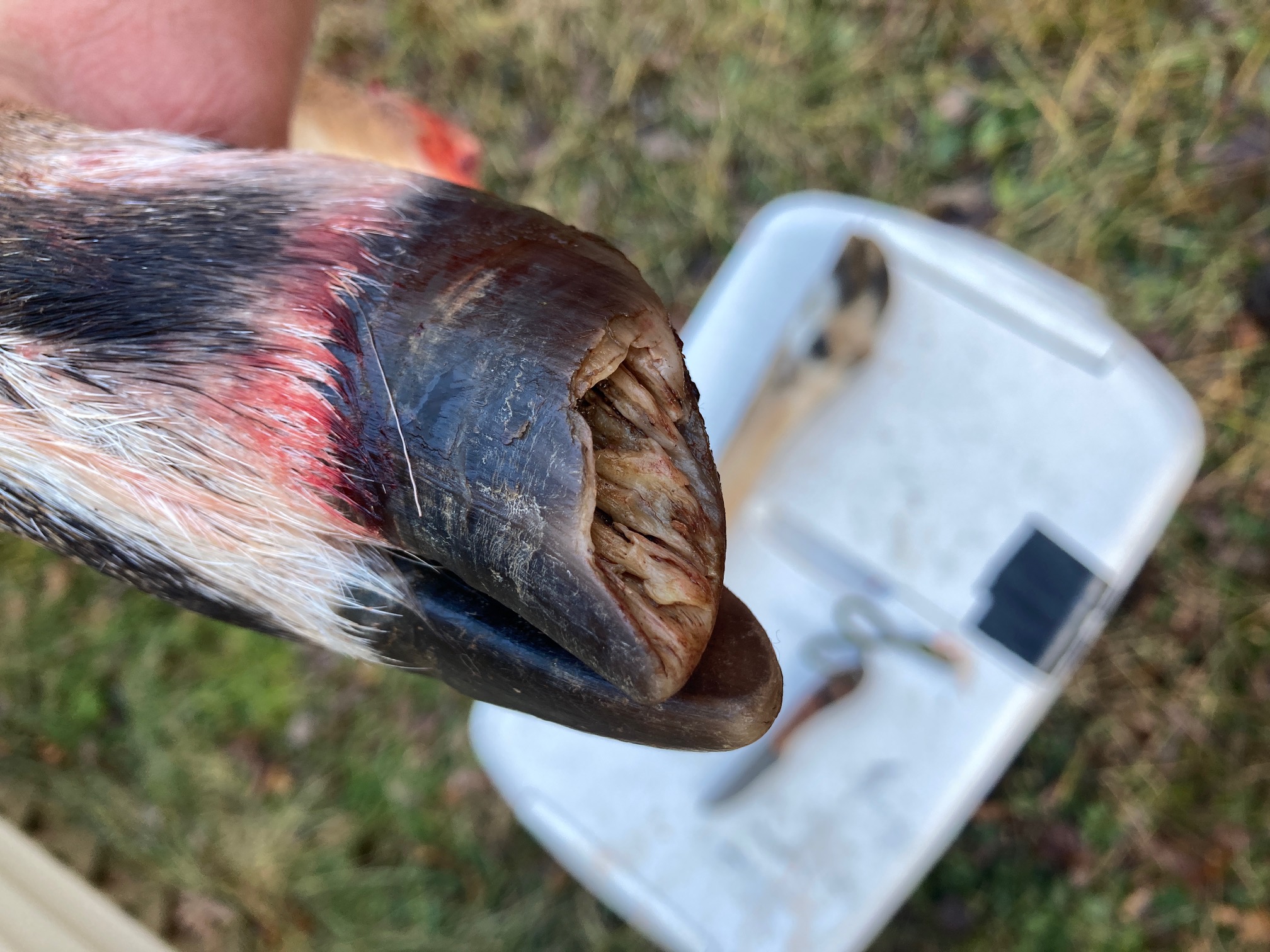
Huge old deer had weirdly rounded hooves and this big rotting hole in one hoof. His entire leg above this was enlarged, probably infected. All of his teeth were gone, completely worn down. His belly was full of grass, because he was unable to browse brush any longer.
The beautiful power of a free market guitar
A lot of the recent discussion and reporting about the World Economic Forum in Davos, Switzerland, is how hard the participants there are trying to centralize decision making, to aggregate power into as few hands as possible, and to control the choices that individual people have available to them all around the world. This effort to concentrate power and decision making in the hands of elites runs opposite and directly against the democratic forms of government that many people around the globe have fought and died to achieve.
Places like India, France, Britain, Israel, South Korea, Sweden, Norway, Germany, Austria, Italy, Hungary, the Philippines, and of course my home country of America, have all offered their citizens a maximum amount of personal freedom and opportunity. People living there can make all kinds of choices about what they want to read, to say, to wear, to eat, what kind of job they want to try, what kinds of products they want to try and create and sell. And that last part, the creating and selling part, is really at the heart of democracy. Because free markets offer choices not just in economic spheres, but which naturally blend into our own personal lives.
When a person, you the reader here, for instance, feels personally fulfilled by fully following your natural talent and curiosity, and by fulfilling your creative spirit, often also followed by greatly improving your physical living conditions, then you become a maximally happy person. This pursuit of happiness is one of the main reasons that America exists, and it is enshrined in our Declaration of Independence. A nation filled with happy people is a miracle, because it is so rare in human history. So we see that free markets create the most happy, most fulfilled individuals, who are creative, educated, and opinionated.
And we also see with the WEF that the wealthiest people on Planet Earth are now scheming and trying to take that happiness away. The WEF people do not want “little people” individuals to make their own decisions. Instead, they want centralized decision making for all of us, by a very small number of ultra wealthy people. They do not support democracy or free choice or you having an opinion that threatens their power.
I want to share a neat related video with you. To me it is powerful because it touches on this subject of an individual who follows his dream to make the best guitars possible within the free markets that the world allows. He succeeds within the international guitar market, but because of a natural resource constraint – the almost complete loss of ebony trees, necessary for making guitar necks and frets – he takes a big risk, makes some big sacrifices, and ends up playing an even bigger and more positive role in the world.
Bob Taylor, of Taylor Guitars, uses careful market-driven management of rare ebony trees and their surrounding forests to create the conditions necessary for conserving the vast African rainforest jungle those trees grow in. When the local people no longer need to poach ebony trees to sell on the black market, they become protectors of the ebony trees. Economics and free markets keep ebony trees alive, and growing for the future, as well as the richly diverse jungle habitat in which ebony trees grow. This is powerful stuff only achievable by free markets.
The same dynamic is also at play with trophy hunting in Africa, where wealthy hunters pay much more to kill wild game than that same animal is worth as bush meat to the local populations. Because the locals get the meat from the trophy animal (99% of the trophy animal is immediately donated to locals, the hunter and the safari camp getting the other 1%) anyhow, and they also get the hunting and tourism-related jobs from the international visitors who want to see and hunt wildlife, the incentive shifts away from poaching and market hunting to the locals then protecting and conserving the wild game they once saw only as a meal. Again, powerful natural resource conservation as a direct result of free markets.
Long live free markets, personal choice, personal accountability, and personal reward for hard work and risk taking. May the World Economic Forum fail in its effort to end our choices and to make us “own nothing.”
Here is the Taylor Guitar video. I hope it speaks to you like it speaks to me.
(and here is the ten years later video, which is about ebony tree planting and husbandry)
Advice from a deer
As sure as the sun rises, there is sure to be complaining among hunters about the state, condition, blood pressure, and dental hygiene of Pennsylvania’s deer herd. In fact, you can’t escape the topic if you spend any time, like even a minute or two, in the company of devoted hunters. No matter who I am standing around, next to, or in line with, the complaints begin to flow about the Pennsylvania Game Commission and its deer management.
Despite being highly skeptical about government in general, and therefore despite keeping an open mind to complaints about government failings, I find myself repeatedly unpersuaded by these deer management complaints. While not quite ranking up there with UFO sightings or insistence that PGC has helicopter-imported mountain lions and coyotes to eat the deer, the fretting and nail biting and angry denunciations always seem to lack key aspects of any serious argument.
For example, for twenty years I have heard that Sproul State Forest harbors no deer. Then last year I easily killed a deer standing right at the edge of Sproul State Forest, and saw many others. This November, I hunted elk in Sproul State Forest and State Game Lands 100 in northern Centre County, and found myself endlessly surrounded by deer, from dawn until way past bed time while driving. Conventional views that these deer do not exist are easily reinforced around bar stools, but I have found them easily and quickly disproven in personal contact with the deer habitat itself.
One of the real challenges to Pennsylvania deer hunters is the change in deer herd size and behavior since 2001, as well as the maturing of our forests since the 1970s, when a lot of today’s older hunters were really getting into the lifestyle. A hunting culture based on sitting in one place and watching unsustainably sized deer herds migrate by resulted, and now that most rural deer herds have been lowered, just sitting and waiting is not enough. Especially when the mature forests we now experience are devoid of any acorns for the second year in a row.
In 2021 a late frost killed the oak flowers in northern PA, resulting in no acorns up north and spotty acorn crops in the south. In 2022, rampant gypsy moth infestations across the entire state denuded entire oak forests of every leaf and flower, which has again resulted in zero acorn production across a great deal of Pennsylvania’s forests. If you are inclined to blame people for things that are mostly out of people’s control, then I suppose we can point out that PA DCNR seemed to hold back on gypsy moth spraying in 2021 and 2022. Had DCNR sprayed more, then the state-wide acorn crop failure we now behold probably would not have been as bad.
The fact is that a great many of us started sitting or walking in beautiful mature forests this past Saturday or Sunday as PA’s deer rifle season opened up, and found ourselves marveling at the incredible silence greeting us. Hardly any bird activity. Maybe one squirrel seen all day, and certainly no bears and few if any deer. This is the result of there being nothing for anyone to eat in the woods.
So, unless your woods escaped gypsy moth damage and has acorns, get the heck out of the woods and go find brushy and grassy areas where deer can browse. Utility rights-of-way and clearcuts are the best places to find deer this season, and in fact the only person I know of who killed a deer anywhere near me yesterday (Sunday) was an older guy in a deer drive through a beautifully overgrown overhead powerline right of way. His hunting party also reported seeing eight does with the now deceased buck, none of which they shot.
Yesterday, while I was sitting miserably sick in my covered stand and waiting out the miserable cold rain and wind, a deer in a top hat and silk gloves happened by and gave me the following advice:
In general, access your hunting area well before sunrise and start every deer hunt with a quiet Sit from 6:30-9am, overlooking some promising travel corridor, funnel, or feeding area. Then slowly and quietly Still Hunt into the wind or quartering into the wind until lunch time. Then Sit down and eat lunch quietly, while overlooking some promising location through which wildlife regularly pass or eat. At 1pm pack up the lunch stuff and Still Hunt again slowly until 3:30pm, and then find a good spot with good views and shooting lanes and Sit quietly until 15 minutes before shooting light ends. Then slowly and quietly walk out, and maybe kill something on your way back to your vehicle or camp, only unloading your firearm when shooting hours have officially ended.
I myself am about to suit up for a long and slow stalk through some brushy utility rights of way. Yes, they are now wet, and always steep, and the going is tough. But that is where the deer are, because that is where they can eat and survive, and I am hunting deer so that I might actually kill one.
The deer and I must meet in person in order for this transaction to happen.
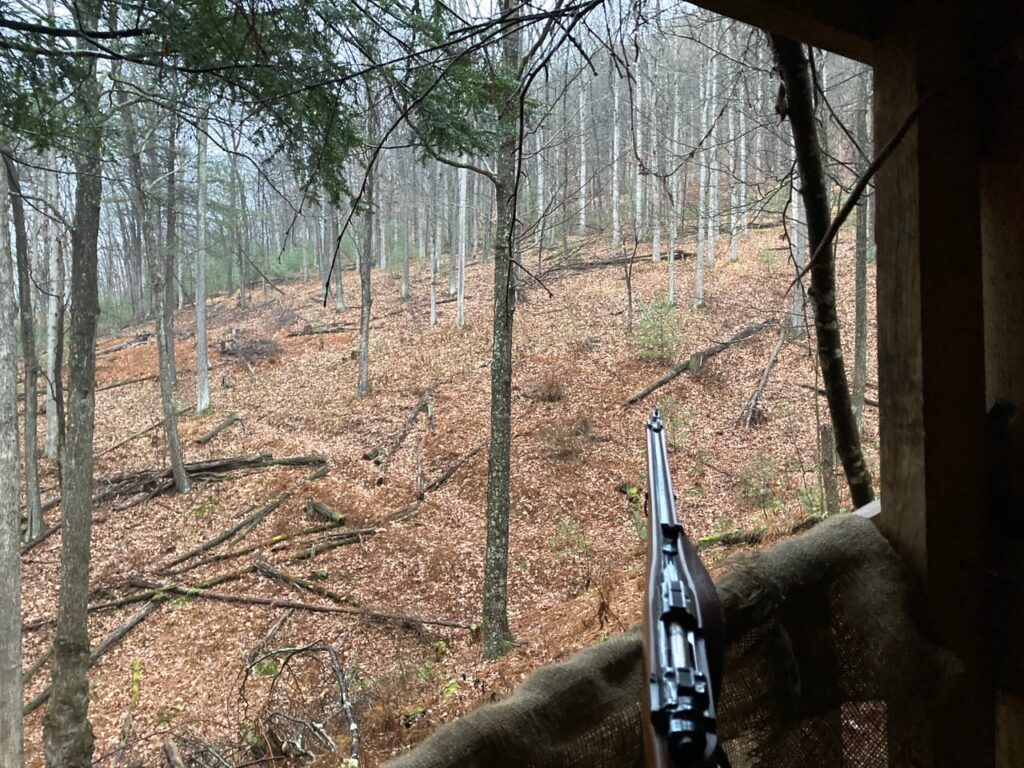
As much as a covered hunting blind may be a necessity when the hunter is sick or the rain is pouring down, the fact is this not really hunting. Slowly and quietly walking into the wind through good deer habitat with your firearm at the ready is real hunting. Do it.
PA elk & bear seasons now behind us
You can spend all year excitedly anticipating a few days here or there, and before you know it, those days arrive, they happen intensely, and then they are over like a dream.
This dream we speak of here are the various big game seasons that are such a big part of so many peoples’ lives, entire families and communities, entire businesses (I think hunting is an annual $1.6 BILLION business sector here in Pennsylvania). Thus far we have had an elk season and now the main bear season pass along. Here are some of my thoughts on these two wonderful experiences.
First, the elk hunt.
I was fortunate enough to draw a coveted PA elk tag, after applying for many years and building up a lot of preference points. The lottery drawing was announced in late August, and I immediately began planning. The general elk season is just six days long, and unless you are going to engage a guide for a few thousand dollars, you have a lot of work to do before setting foot afield with a gun. If you draw a bull tag, paying a guide is worth it.
After a tremendous amount of analysis and planning, and some September scouting, I was fortunate to hunt for elk with some good friends and a .62-caliber percussion rifle over my shoulder in Elk Zone 13. We camped out on a log landing in Sproul State Forest, with elk all around us, and each buddy scouted hard each day, looking for elk that the sole hunter (me) could get after.
Elk Zone 13 is huge, and contains a lot of vast public land. And so the elk harvest data shows that it is a bit of a Death Valley in terms of hunters actually killing an elk within it. While a lot of Pennsylvania elk hunting takes place briefly where a lot of the local elk have pet names and are used to being around people, there are a few elk zones where the opposite is the case. Zone 13 is one of those opposite cases. It is a tough place to hunt under any conditions, and under the rainy, warm, and very windy conditions we had, it was just about impossible. In the end, just one of three bull tags there was filled, and as of the fifth day of the six day season, just one of the six cow elk tags had been filled. I was not one of those people lucky enough to fill my elk tag.
And it was not a harvest failure because we didn’t hunt smart. We hunted so smart that we were bumping into elk guides and their clients at every turn. We had done our homework ahead of time, and we knew where the elk were likely to be, which is where you will find an elk guide, too.
One of the things I did as part of the analysis and planning phase was was plot all of the past elk harvest data on the large Elk Zone 13 map the PA Game Commission sent me. Once your eyes see exactly where the elk are killed every year, almost always in large clusters, over the past seven years that Elk Zone 13 has been around, you recognize where to concentrate your field scouting efforts. And then our subsequent field scouting efforts confirmed the presence of elk, including the day before the elk hunt started.
Like I said above, the weather conditions were awful for any type of big game hunting, and especially with a primitive weapon such as I carried. My effective range was 110 yards, and 75 yards was a lot more preferable. But range doesn’t matter if you can’t get an elk to stand broadside for a few seconds. I did mix it up directly with an elk herd that was hiding in a forest, and I did call one close back to me, and I did get a couple good setups on moving elk. But the seesawing winds gave away my presence each time, and the elk stormed off each time. Like I said, I had a wonderful time with good friends in a beautiful place with a fantastic gun over my shoulder. Elk or no elk in the hunting bag, I had a great time hunting elk in Pennsylvania (an especial Thank You to the many private landowners who generously granted me access to their properties to hunt elk).
Now, bear season.
Bear season ended yesterday, and the last of the bear hunters grudgingly left the cabin today. As usual, we had a large crowd gathered here, with everyone happy to catch up with chums from years past, sharing good food and good drink and good cheer. One thing all hunters eventually begin to notice is that with age comes a mellowing of the spirit. The chase is not as important as simply being present in God’s creation, often communing with Him in the largest house of prayer anywhere, the mountain forest cathedral.
And so fewer and fewer guys are coming here to hunt, and more and more guys are here to relax. And that is OK.
We who both communed with God in the mountain forest cathedral, and who also hunted, saw no bears and only a few deer. Mostly because there are no acorns in the woods, and all wildlife must go where the food is. If there is no food here, there are no bears here. Gypsy moths devastated Pennsylvania’s oak forests this past summer, and so there were no oak flowers to turn into oak acorns to fatten up buck and bear, squirrel and turkey. The woods was totally quiet this week, and it made me wonder what a squirrel migration looks like. Do hordes of mountain squirrels move en masse into suburban yards in lean years like this one? And where the heck do all the bears hibernate?
Roughly 1,450 bears were killed in PA’s early archery and muzzleloader seasons, and so far just under a thousand bears total are reported for this week’s bear rifle hunt. Usually this week’s four-day hunt results in an enormous bear kill. We are now looking at an epically low bear harvest in a state with a huge and burgeoning bear population that needs managing (Just a few days ago New Jersey issued an emergency bear hunt approval, because The People’s Republic of New Jersey is being overrun with bears, which unfortunately cannot be trained to eat liberals but whom the liberals recognize as a natural predator and are seeking to reduce out of self defense).
Another thought a lot of people are sharing today is that the early bear seasons, archery and muzzleloader, are very effective, so that come the late November bear season, there are a lot fewer bears to be had. Bears that are facing both extreme hunger AND extreme hunting pressure will den up early to get out of the storm. It seems a lot of the bears that survived the early seasons arrived in a bleak foodless November and said an early good night until March, 2023.
Next up is deer season, another dream time. And our deer patterns are also all off kilter here, so it is going to be a very interesting deer hunt in the mountains. Again, it’s no acorns, no deer. Except for that one gigantic buck I saw a couple times….stay tuned for that report. Let’s hope it makes up for the no elk and no bear reports we already filed away for 2022…
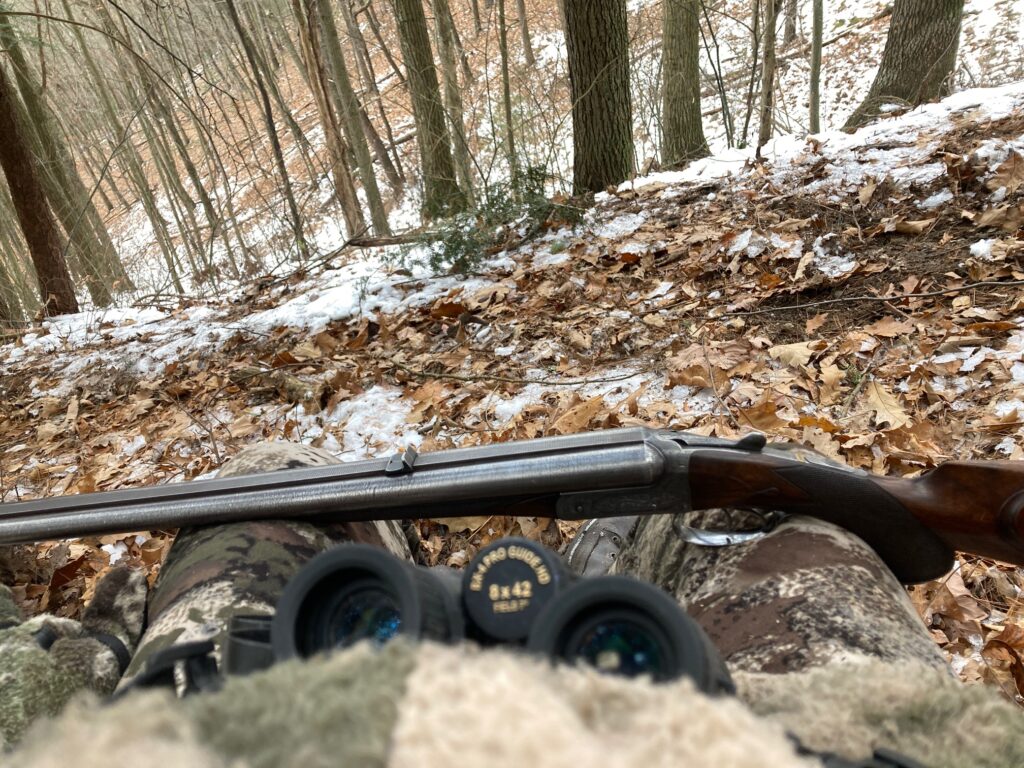
An 1884 double rifle made for tigers in India would be great bear medicine. If only a bear would appear.
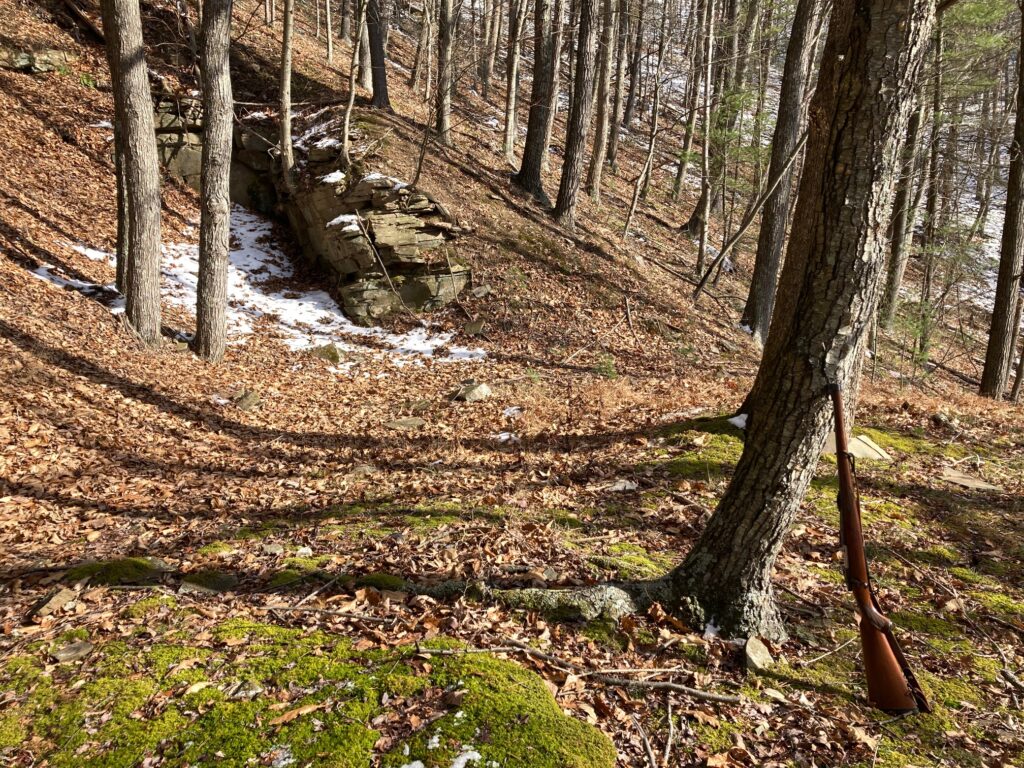
This remote old mine is one of dozens that dot our mountains. It is a fine place to hunt, take a nap, or write in a notebook. A couple times I have done all three in one visit.
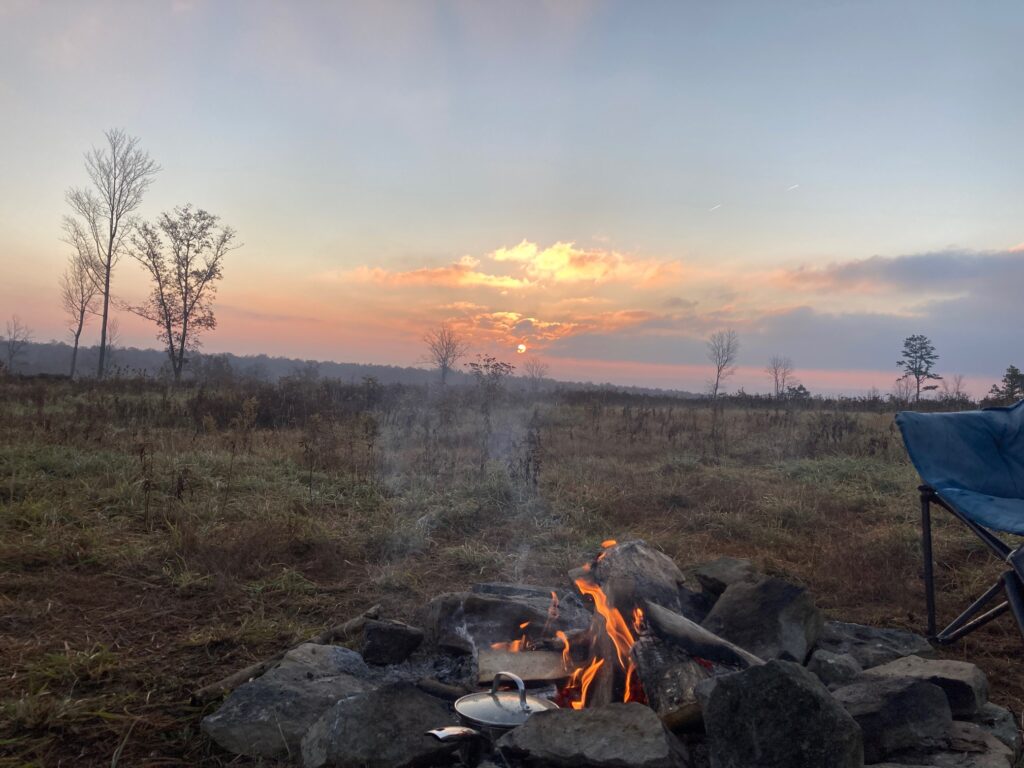
Camped with friends on an old log landing in the Sproul State Forest is a wonderful way to spend life’s limited time, elk or no elk in the bag.
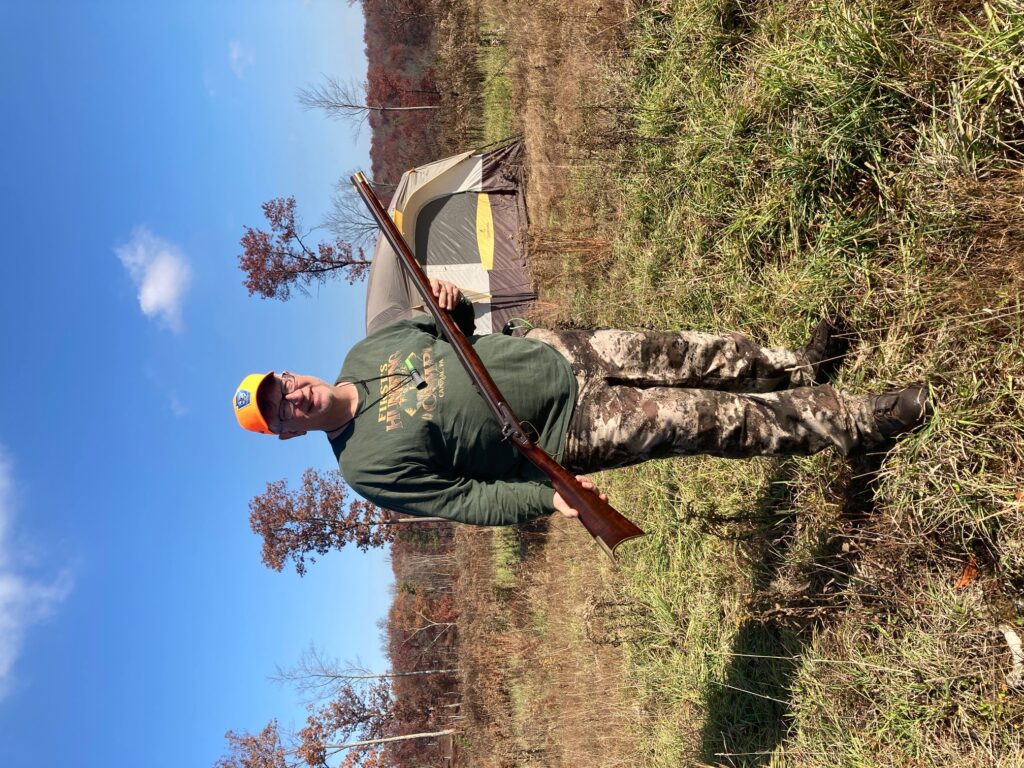
A great way to spend a day hunting elk, with a beautiful .62 caliber rifle (not a smoothbore) made by Mark Wheland here in PA. With its 335-grain round ball, it is easily capable of cleanly taking a hearty elk.
